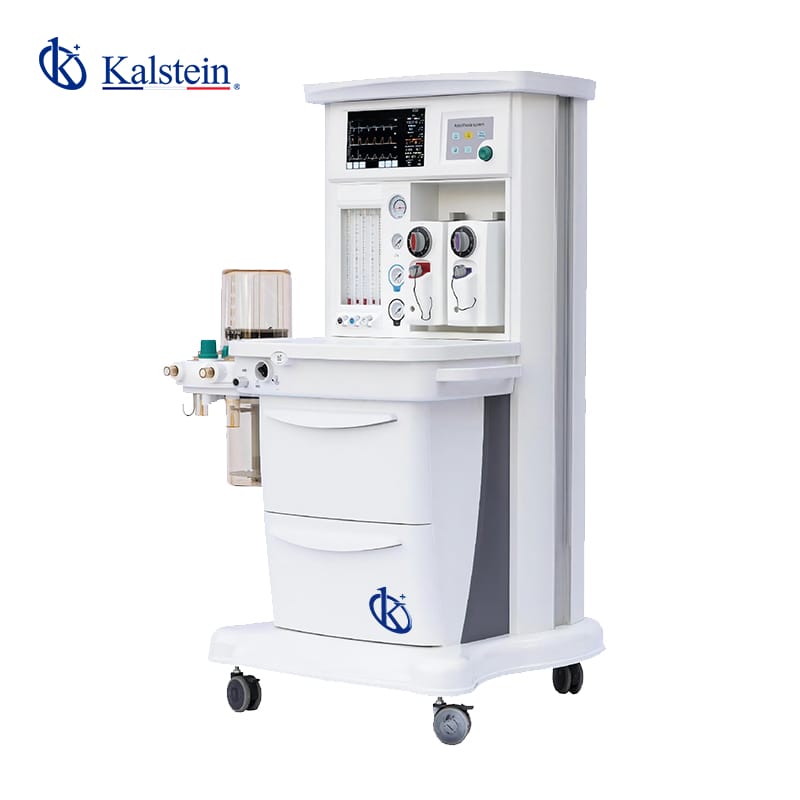Anesthesia machines have significantly evolved in recent years, driven by technological advancements and a deeper understanding of clinical needs.
In this article, we will explore the latest trends in medical line anesthesia machines and how these devices align with these trends.
Are you yearning for top-tier medical equipment, ready to enhance the efficiency of your laboratory? Visit https://kalstein.pk/category-product/medical-line/anaesthetic-machine/ to explore our high-end catalog, packed with the best finds at the most competitive prices. Excellence marks our brand, we innovate and manufacture high-precision equipment, both reliable and durable to meet your needs. Why wait? Make your quick and secure online purchase, take the leap towards the future of medical technology today. https://kalstein.pk/
Integration of Digital Technologies
Advances in Digital Monitoring
The latest trends in anesthesia machines include the integration of advanced digital technologies to improve the precision and safety of monitoring. Digital monitors provide real-time data, allowing anesthesiologists to quickly adjust anesthesia levels as needed. This not only enhances procedural efficacy but also reduces the risk of complications.
Benefits of Connectivity and Interoperability
Another important trend is the connectivity and interoperability between different medical devices. Modern anesthesia machines are designed to integrate seamlessly with other hospital systems, such as electronic medical records (EMR). This integration allows for smooth data transfer and better coordination of patient care, thus optimizing clinical outcomes.
Automated Anesthesia Systems
Precision and Consistency in Anesthesia Administration
Automated anesthesia systems are an emerging trend that is revolutionizing anesthesia practice. These systems use advanced algorithms to administer anesthesia precisely and consistently, minimizing human variability. This ensures that patients receive the exact dose needed to keep them in a safe state during surgery.
Reducing Workload for Anesthesiologists
Automation not only improves precision but also reduces the workload of anesthesiologists. By automating routine and repetitive tasks, healthcare professionals can focus on more critical aspects of patient care. This not only enhances efficiency but also reduces the risk of human error.
Personalized Anesthesia Technologies
Anesthesia Based on Genetics and Biomarkers
Personalized anesthesia is a growing trend in the medical field. Advanced anesthesia machines are beginning to incorporate genetic data and biomarkers to personalize anesthesia administration. This approach allows for adjustments to anesthesia levels based on individual patient characteristics, thereby improving the safety and efficacy of the procedure.
Implementation of Predictive Models
Recent developments in medical devices include the use of predictive models to anticipate patients’ anesthesia needs. Using artificial intelligence and machine learning, anesthesia machines can predict how a patient will respond to different anesthesia levels, allowing real-time adjustments and improving clinical outcomes.
Improvements in Patient Safety
Advanced Alarm and Monitoring Systems
Patient safety is a priority in the design of new anesthesia machines. Advanced alarm and monitoring systems are now standard features, alerting anesthesiologists to any anomalies in the patient’s vital signs. These alarms help prevent serious complications by enabling quick and effective intervention.
Filters and Air Purification Systems
Another crucial aspect of safety is the air quality in the surgical environment. Modern anesthesia machines are equipped with filters and air purification systems that eliminate contaminants and reduce the risk of infections. This is especially important in lengthy and complex procedures where exposure to anesthetic gasses and other agents can be harmful.
Sustainability and Energy Efficiency
Eco-Friendly Materials and Components
Sustainability is an important trend in the development of medical devices. Next-generation anesthesia machines use eco-friendly materials and components that reduce their environmental impact. This includes the use of recyclable plastics and electronic components designed for greater durability and lower energy consumption.
Optimization of Energy Consumption
In addition to materials, energy efficiency is a key focus. Anesthesia machines are being designed to optimize energy consumption, which not only reduces operating costs but also minimizes the hospital’s carbon footprint. These developments in medical devices reflect a commitment to sustainability without compromising patient care quality.
Continuous Education and Training
Training Programs in Anesthesia Technologies
The rapid evolution of anesthesia technologies requires continuous training for healthcare professionals. Manufacturers of anesthesia machines are developing advanced training programs that include simulations and interactive modules. These programs ensure that anesthesiologists are up to date with the latest innovations and can use them effectively.
Online Learning Platforms
In addition to in-person training, online learning platforms are gaining popularity. These platforms allow professionals to access educational resources from anywhere, facilitating constant updating of their knowledge. This is essential for staying current with innovations in medical equipment and providing the best possible patient care.
Conclusion
The latest trends in anesthesia machines reflect significant advancements in medical technology, focusing on personalization, automation, and sustainability. These innovations not only enhance the efficiency and precision of anesthesia but also contribute to patient safety and environmental sustainability.
With continuous training and the integration of digital technologies, medical line anesthesia machines are well-positioned to meet future challenges and improve clinical outcomes.

